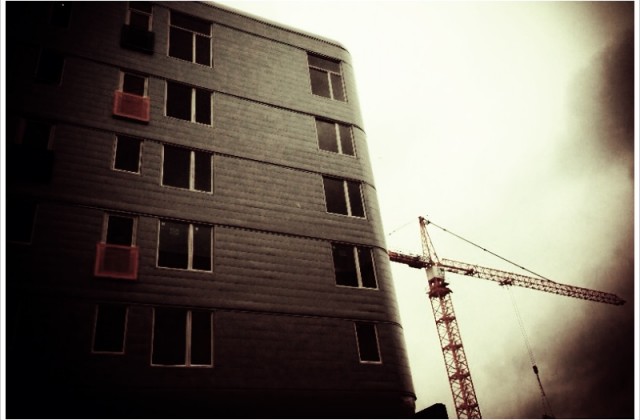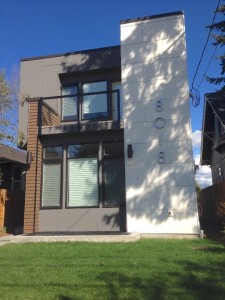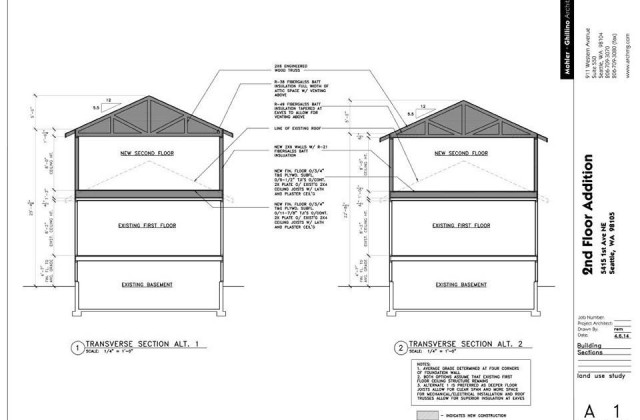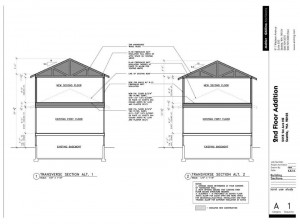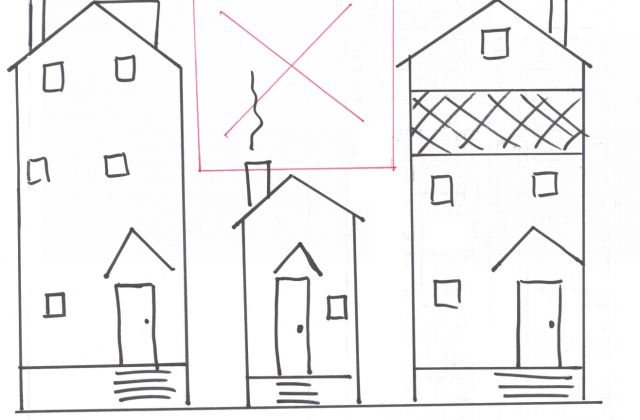Hard to Find the ‘Incentive’ in Incentive Zoning
This post originally appeared in the Spring edition of The Voice, NAIOP’s semi-annual government affairs newsletter.
Recently, the City of Seattle has placed an emphasis on what it calls incentive zoning, a program that charges a fee in exchange for granting additional Floor Area Ratio (FAR) for new housing and non-residential development. This idea is paradoxical: charge a fee for taking on more risk and costs? That’s an incentive? City leaders, who see additional FAR like allowing a fisherman to increase his catch, do not share the incredulity. Smart Growth Seattle has engaged on this issue with data, making the argument that we need a better way.
Explaining the economics
Councilmember Mike O’Brien invited noted local real estate expert Mike Scott to the Council table recently to explain the real estate market trends for multifamily housing. Scott shared a chart showing that, yes, the rules of supply and demand do indeed actually apply to the multifamily housing. When apartment vacancies increase faster than demand, apartment prices drop. When vacancies fall in the face of rising demand, prices go up.
“It doesn’t work like that,” is often the response by many affordable housing advocates and those suspicious of growth. Persuading the Council to accept the real estate business cycle is a first step toward helping them understand that if their concern is high prices, the best thing they can do is reduce rules and regulations that slow housing production.
Where is the problem?
The crisis of housing supply for people who make 60 to 80 percent of Area Median Income (AMI) is something of a mirage. Workforce housing, as it is usually called, is actually in excess supply in Seattle. We’ve cited King County and other data that consistently show a surplus of housing priced for people who earn from $37,000 to $44,000 annually. Rents for older housing stock, something supported by Scott’s presentation to Council, are cheaper; while rents are higher for new construction. It is that new construction that attracts the most attention (and irritation) from opponents of growth who argue that, “all this new housing is making housing more expen- sive.” This simply isn’t the case.
What is the best tool?
Incentive zoning, as it is currently construed, is no incentive. The data we have presented to Council and in the press is pretty clear, too. Almost two-thirds of projects eligible to take the so-called incentive didn’t. That means that all that additional capacity that the City was essentially selling, was priced too high. Lost in the failed transactions were additional housing supply and the benefits that would accrue to the public through the fee and additional sales tax, jobs, and wages created by building the additional housing.
The future of multifamily housing
Seattle currently has no aggressive strategy to broadly increase housing supply, and to strategically and efficiently direct subsidies for lower-income level housing. Instead it has fees and taxes for new growth through its incentive program, the housing levy, and useful programs like the Multifamily Tax Exemption.
The Council should not discourage innovation in the single-family realm, in microhousing, or in the production of other multifamily products by mak- ing more rules, imposing more process, and charging more fees. If, with the help of NAIOP and others, Smart Growth Seattle can fend off additional burdens, we can start making the case for a more positive and constructive set of policies to welcome growth of all kinds and encourage new housing development of all types in all neighborhoods in the city.
Corn Dogs, Housing, and Innovation
I was asked to write an opinion piece for Publicola yesterday comparing the reaction the Seattle City Council had to ride sharing programs to the reaction they are contemplating to small-lot housing. The truth is I already did that in a post not too long ago. To me, the comparison is obvious. Small-lot housing is an innovation, taking smaller lots and turning them into real houses for a lot less money than developing a big house on a full size lot. This is a lot like the entrepreneurs finding a new way to meet the demand for easy, cheap, and safe transportation alternatives.
But I couldn’t resist a comparison that came to me when I saw a guy walking out of a Safeway in West Seattle one day.
If the city of Seattle regulated hot dogs one can only imagine what the advent of the corn dog would provoke at City Hall. How do we define a corn dog? Is it safe? And about that breading made of corn as opposed to a bun—what have other cities done?
After lots of hand-wringing, committee meetings and confabulations with staff and members of the hot dog community, one can imagine the solution: legalizing corn dogs, but limiting them to sale three days a week and only in Pioneer Square.
I know I was mixing metaphors, but when I read the Wikipedia page about corn dogs I think the comparison makes sense.
Newly arrived German Texan sausage-makers, finding resistance to the sausages they used to make, have been credited with introducing the corn dog to the United States, though the serving stick came later. A US patent filed in 1927, granted in 1929, for a Combined Dipping, Cooking, and Article Holding Apparatus, describes corn dogs, among other fried food impaled on a stick.
Human beings have a remarkable and admirable ability to innovate and find opportunities to meet demands for basic things like food, transportation, and shelter in innovative ways. Why not make that easier? In the case of small-lot legislation offered by the Department of Planning and Development innovation is stymied, and even people who want to add on to their own homes will be limited.
Read the full Publicola post, and be sure to contact Councilmember Mike O’Brien at Mike.Obrien@Seattle.gov or attend and speak a the hearing this Friday at 2PM in Council chambers. Urge him to rethink the City’s approach to housing, especially small-lot and microhousing. Shouldn’t the City be encouraging new ideas to meet basic needs? There are lots of ways to eat a hot dog, and even more ways to meet Seattle’s growing demand for housing. Shouldn’t we try them all?
Small Lot Hearing This Friday
We’ve been hearing about the problems with small-lot legislation being considered by the City Council. Here’s what David Neiman a local architect says about the problems created by the legislation because of it’s efforts to placate a small group of angry neighbors:
These defects are known to the planners at DPD. They understand them and fully appreciate them. I suspect if their mandate in writing this proposal was to come up with a way to facilitate better small lot development, the outcome would be quite different. Instead, the City leadership has a pitchfork mob at their door with a list of demands, and they have directed DPD to take dictation.
A complex code is made more complex and homes get harder to build.
And Matt Gangemi writes about the downzone created by the legislation which penalizes innocent by standers, owners of existing single-family homes.
If you live on a lot less than a 3,200 square feet in size, the maximum height has effectively gone from 35 feet down to 23 feet. That addition you dreamed of will never happen, and even if you never planned to expand your house, your home value just went down. The pool of buyers will look more favorably at your neighbor’s slightly larger lot, knowing that they can either build up or at least keep the value in case the next owner wants to build up. Even if the physical home you live in is the same, the potential square footage of your home just went down.
Now people who might have saved themselves a move and the purchase of new home will have their quality of life and finances impacted if the legislation passes.
Your opportunity to weigh in comes this Friday at 2PM at City Hall in Council Chambers. Please make an effort to attend or write Councilmember Mike O’Brien, chair of the PLUS Committee.
Small Lot Development
Issue Information:
http://www.seattle.gov/dpd/codesrules/changestocode/smalllots/background/default.htm
Legislation: Council Bill 118052
Committee Review Schedule:
- Friday April 18, 2014, 2:00pm – Public Hearing and committee discussion
- Tuesday May 6, 2014, 2:00pm – Committee deliberation and possible vote
Take My House? Please Don’t.
More and more single-family homeowners are beginning to feel the unintended impacts of the Department of Planning and Developments misguided efforts to satisfy angry neighbors. Here’s another example from the Facebook feed.
Take my house, for example. Here’s an architect’s sketch of my house with the simplest, most cost-effective addition. Too tall for our 2,520 sf lot, per the new proposed regs. Our house was built in 1907, just like the one next door on a 1,860 sf lot. This legislation will impact many existing homes but I didn’t notice because the focus has been on buildable lot size and new construction.
Angry neighbors seem to be getting what they had wanted all along, a halt to change even if it comes at the expense of their neighbor in an already built house who wants to add on for a growing family. They have admitted that what we’ve been saying about the downzone is true, and that it is exactly what they want:
It’s true that the new height rules proposed by the DPD do also impact some existing homes on very small lots. However, this is only to keep the owners of those homes (and developers) from turning them into skinny, outrageously tall three-story structures [emphasis belongs to the angry neighbors].
So the decision is up to Councilmember Mike O’Brien (Email him); cave to angry neighbors who would deny a family more living space simply because they don’t want anyone to have three floors, or go back to discussing the 80 Percent Rule, a reasonable way of growing in single-family neighborhoods. Councilmember O’Brien should also avoid anything that takes away the ability of a family to grow in place.
The Council should engage in thoughtful consideration of how we grow into the future, not let angry neighbors turn them into the Harper Valley PTA. That would be outrageous.
Downzoning Your Dreams
The evidence continues to build that small-lot legislation offered by the Department of Planning and Development makes things worse for everyone involved, including owners of existing single-family homeowners. Matt Gangemi writing at The Urbanist calls the legislation Seattle’s Largest Downzone.
If you live on a lot less than a 3,200 square feet in size, the maximum height has effectively gone from 35 feet down to 23 feet. That addition you dreamed of will never happen, and even if you never planned to expand your house, your home value just went down. The pool of buyers will look more favorably at your neighbor’s slightly larger lot, knowing that they can either build up or at least keep the value in case the next owner wants to build up. Even if the physical home you live in is the same, the potential square footage of your home just went down.
And as we’ve pointed out again, again, and again, this legislation makes what is already a complicated code for single-family infill development even more complicated. That won’t help neighbors know what might get built on their block, it doesn’t provide certainty for builders trying to meet housing demand, and it makes things more challenging for families looking for a single family home.
If that wasn’t enough of a reason to stop this legislation in its tracks now there is the added damage of capping what people can do with their homes that they already own. This is a disaster for growing families looking for affordable ways of expanding their living space. Hopefully Councilmember O’Brien is listening, and we can go back to considering the 80 Percent Rule, a simple, scalable solution to creating more housing and predictability for builders, neighbors, and families.
Contact Councilmember Mike O’Brien and urge him to hold off on this legislation and consider the 80 Percent Rule as a simple way to address the future of infill development in single-family neighborhoods.
